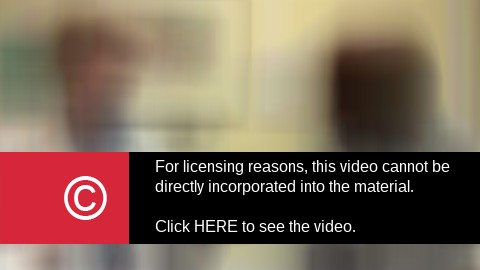1.5
Patient education
Patient education allows patients to play a bigger role in their own care. It also corresponds with the growing movement toward patient- and family-centred care.
One of the most important roles nurses have today is patient education. This used to be the role of the physician, but today nurses gain more and more responsibility for educating patients and helping them to become responsible for their own health status. Patients need to be active in their own health care. This means they need to understand their health status and prevent or minimize complications from any chronic illnesses.
Patient education needs to be easily understood. Health educators (nurses) should be aware that a lot of patients are health care illiterate. They are not able to understand health care information and what they need to do with that information.
+

Source: Author Juhan Sonin, hGraph: looking at a group of patients, license Creative Commons BY 2.0.
Fig. 8. Educating patient
1.5.1
Discharge planning
Hospital nurses can best educate patients by understanding that discharge planning begins with admission. Nurses have to ensure patients are effectively educated throughout their stay in hospital so that they are prepared to care for themselves and don’t return for the same issue. Spending the last 20 minutes of a hospital stay discussing the patient’s illness and follow up care is not adequate. Handing the patients materials to read on their way home is ineffective.
Without proper education patients will return home and come back to their previous life style until another episode. Preventing re-hospitalization is a huge responsibility for all medical professionals. Educating patients helps to improve the outcomes and lowers the cost of medical care.

Video 5. Patient education
Before starting patient education consider the following:
- Gather information. Talk to the health care team members and observe the patient.
- Get to know your patient. Introduce yourself and explain your role in your patient's care. Review the medical record and ask basic get-to-know-you questions.
- Establish a good relationship and gain trust. Make your patient feel comfortable with you. Show respect and treat each person with compassion.
- Involve others. Ask if the patient wants other people to be involved in the care process. The person volunteering to be involved in the care may not be preferred by the patient.
1.5.2
Tips to improve patient education
- Delegate more responsibilities to support staff and be more focused on patient education.
- Begin educating patients with every encounter from admission.
- Find out what the patient already knows. Correct any misinformation.
- Ask questions about their understanding of the care.
- Use return demonstration when administering care. Involve the patient from the very first treatment.
- Ask the patient to tell you how they would explain their disease or treatment to their family.
- Make sure the patient understands the medications as you administer them. Make sure they understand how and when to refill medications.
- Provide patients with information about signs and symptoms of their condition that can require immediate attention.
- Patients have different learning styles. Find out if your patient learns best by watching a DVD or by reading.
- Consider the patient’s limitations and strengths. Consider patient´s physical, mental, or emotional impairments that can influence the ability to learn. Consider also factors such as fatigue and the shock of learning a critical diagnosis when educating patients.
- Include family members. Involving family members improves the chances that the instructions will be followed. Families play a critical role in health care management.
Vocabulary
Chapter 1 | |||
Vital signs | Vitální funkce | Gradual | postupný |
Assess | Hodnotit, ohodnotit | Nausea | nevolnost |
Moisture | vlhkost | Regarding | Týkající se |
Complaint | stížnost | Repeat back | zopakovat |
Onset | nástup | Feedback | Zpětná vazba |
Intermittent | přerušovaný | Charge nurse | Vrchní sestra |
Exacerbating | Způsobující zhoršení | Severity | závažnost |
Chapter 2 | |||
Healthcare provider | Zdravotnický personál | Narrowing | Zúžení |
Consistency | Spojitost | Murmur | šelest |
Bulging | Vystupující | Bowel | střeva |
Mole | Mateřské znaménko | Briskness | pohotovost |
Lump | bulka | Wisp | chomáč |
Nodes | uzliny | Swishing | šustivý |
Percussion | poklep | Flow | proudit |
Chapter 3 | |||
Ability | schopnost | Nonverbal | mimoslovní |
Posture | póza | conscious | Při vědomí |
Sincerity | upřímnost | Enable | umožnit |
Discretion | diskrétnost | Frankness | upřímnost |
Audience | Obecenstvo, posluchači | Doubt | pochybnost |
Chapter 4 | |||
Shift | směna | Ensure | ujistit |
Follow-up care | Následná péče | Privacy | soukromí |
Patient handover | Předávání pacienta | Temporary | dočasný |
Compromise | narušit | Occur | Vyskytnout se |
Ongoing | probíhající | Confidentiality | Důvěrnost, diskrétnost |
Comprise | zahrnovat | Brief | stručný |
Verification | ověření | Medical records | Lékařské záznamy |
Illegibility | nečitelnost | Current | současný |
Anticipated | předpokládáaný | Operating theatre | Operační sál |
Chapter 5 | |||
Correspond | Shodovat se, odpovídat | Illiterate | negramotný |
Physician | lékař | Discharge | Propuštění z nemocnice |
Be aware of | Být si vědom | Previous | předchozí |
Gain trust | Získat důvěru | Establish | Nastolit, nastavit |
Compassion | soucit | Volunteer | dobrovolník |